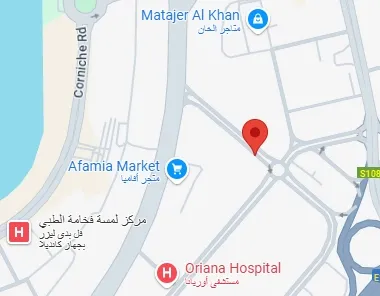In the world of modern web development, creating a visually appealing website is no longer enough. Today’s users expect a seamless, engaging experience that speaks directly to their needs. That’s where content mapping comes in. If you’ve ever wondered why content mapping is crucial for website building, this comprehensive guide is for you.
From aligning content with user intent to improving search engine rankings, content mapping plays a critical role in ensuring your website doesn’t just exist — it performs.
What Is Content Mapping?
Before diving into why content mapping is crucial for website building, it’s important to understand what content mapping actually means.
Content mapping is the strategic process of planning and organizing website content to align with:
User personas
Customer journey stages
Business goals
SEO strategy
Instead of randomly placing blog posts or service pages, content mapping ensures each piece of content has a clear purpose and position within the website structure. It’s about delivering the right message, to the right person, at the right time.
Why Is Content Mapping Crucial for Website Building?
Let’s break down the major reasons why content mapping is crucial for website building and how it affects everything from user experience to SEO success.
1. It Aligns Content with User Needs
When users visit your website, they have questions, problems, or goals. Content mapping ensures you address those needs in a structured, intentional way.
By mapping content to user personas, you’re able to create pages, blog posts, or sections that speak directly to specific audience segments. This personalization improves engagement, builds trust, and encourages action.
Example: A real estate website might map different content for:
First-time homebuyers
Property investors
Commercial buyers
Each group needs tailored messaging — and that’s why content mapping is crucial for website building.

2. It Supports the Customer Journey
Users go through different stages before making a purchase:
Awareness
Consideration
Decision
Content mapping helps you plan material for each of these phases. For example:
Awareness: Blog articles, educational videos
Consideration: Case studies, comparison charts
Decision: Testimonials, product demos
By mapping content across this journey, your site can guide visitors from interest to conversion — which is another reason why content mapping is crucial for website building that works.
3. It Improves SEO Strategy and Keyword Targeting
Google rewards websites that deliver relevant, structured, and helpful content. A strong content map ensures your pages are organized around core topics and keywords, boosting your site’s visibility.
Here’s how content mapping supports SEO:
Reduces duplicate content
Enables keyword clustering (topic silos)
Improves internal linking
Ensures meta descriptions and headers are aligned
If you’re serious about ranking high in search results, understanding why content mapping is crucial for website building becomes essential.
4. It Enhances Site Architecture and Navigation
Ever visited a website and felt lost? That’s often a symptom of poor content planning.
Content mapping lays the groundwork for intuitive menus, sub-pages, and calls to action. It clarifies:
What content belongs where
Which pages are primary vs. supporting
How users flow from one topic to another
Better navigation leads to longer session times, lower bounce rates, and improved conversions — all strong indicators of why content mapping is crucial for website building that converts.
5. It Reduces Content Waste
Many websites suffer from content overload: pages that no one visits, duplicate topics, or outdated blog posts.
With a solid content map, each piece of content has a defined purpose. It becomes easier to:
Audit and update regularly
Eliminate underperforming assets
Prioritize high-impact content creation
This clarity is key to running a lean, effective site — another big reason why content mapping is crucial for website building at scale.
6. It Aligns Content with Business Goals
Every website exists to serve a business purpose: selling products, generating leads, raising awareness, etc.
Content mapping helps bridge the gap between what your users want and what your business needs. It aligns your messaging, tone, and structure with tangible outcomes.
For example:
Want more newsletter sign-ups? Map content that educates users and nudges them to subscribe.
Trying to boost product sales? Create comparison pages, testimonials, and FAQ sections.
That strategic connection is precisely why content mapping is crucial for website building that delivers measurable ROI.
7. It Increases Content Production Efficiency
If you work with a team of writers, designers, and developers, content mapping acts as a shared blueprint. Everyone knows:
What content is needed
Where it fits into the site
Who the audience is
What the goals are
This eliminates guesswork, speeds up production, and ensures consistency across pages. It’s a practical reason why content mapping is crucial for website building, especially for larger projects.
Key Elements of a Good Content Map
Now that you understand why content mapping is crucial for website building, here are the core components to include:
1. User Personas – Who you’re targeting
2. Content Types – Blogs, service pages, FAQs, product pages, etc.
3. Customer Journey Stages – Awareness to decision
4. Keywords and Topics – SEO strategy integration
5. Page Goals – What action you want users to take
6. Internal Linking Opportunities – Content flow and connection
You can use tools like spreadsheets, Trello, or specialized platforms like Lucidchart to visually build your content map.

Tools That Help With Content Mapping
To streamline the process, consider using:
Screaming Frog – For auditing existing content
SEMrush or Ahrefs – For keyword mapping and topic clustering
Miro – For visual content mapping boards
Google Analytics – For performance-based content decisions
Notion or Airtable – For collaborative content planning
These tools will help reinforce why content mapping is crucial for website building in terms of both structure and performance.
Final Thoughts
So, why is content mapping crucial for website building? Because without it, your site becomes a digital maze — confusing users, underperforming in search, and falling short of business goals.
On the other hand, a well-mapped content strategy:
Speaks directly to user needs
Supports SEO and ranking efforts
Aligns with business objectives
Improves user experience and navigation
Whether you’re building a website from scratch or redesigning an existing one, don’t treat content as an afterthought. Make content mapping your foundation — and the rest of your web success will follow.



